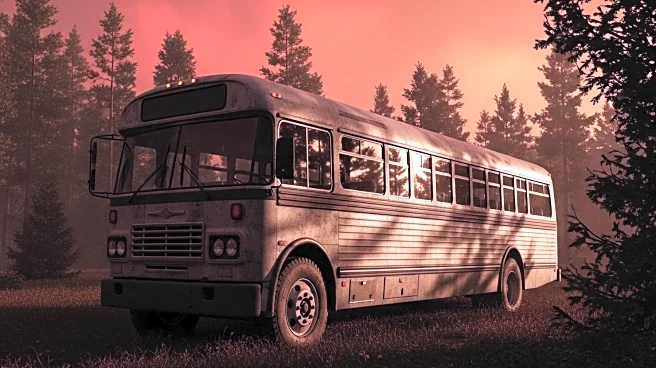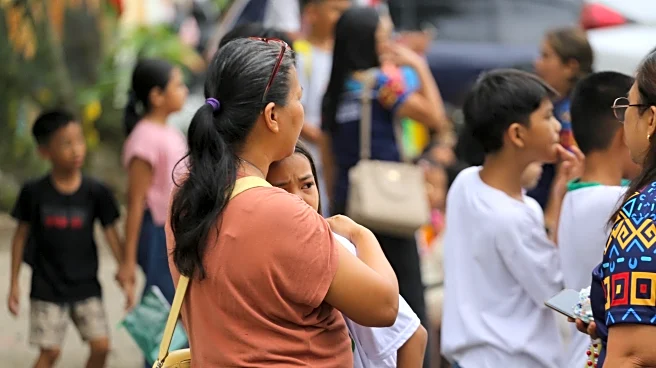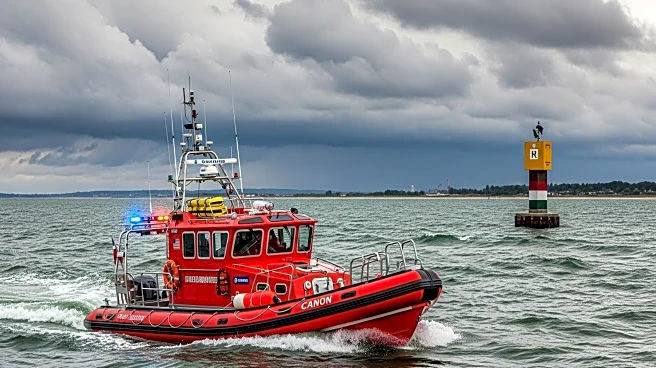What is the story about?
What's Happening?
An offshore earthquake with a magnitude of 7.6 struck near the southern Philippines, raising concerns about a potential tsunami. The earthquake's epicenter was located southeast of Manay town in Davao Oriental province. The Pacific Tsunami Warning Center initially issued a warning, but later confirmed that the threat had passed, although minor sea fluctuations might continue. Damage assessment is ongoing, with reports of structural damage and power outages. The earthquake prompted evacuations in coastal areas as a precautionary measure. The Philippines, situated on the Pacific 'Ring of Fire,' is accustomed to seismic activity, necessitating robust disaster preparedness and response strategies.
Why It's Important?
The earthquake highlights the Philippines' susceptibility to natural disasters, impacting public safety and infrastructure. The immediate response, including evacuations, reflects the importance of effective disaster management in minimizing casualties and damage. The event may influence future policies on emergency preparedness and infrastructure resilience, particularly in coastal regions. The broader significance lies in the ongoing challenge of ensuring safety and stability in a country frequently affected by seismic and volcanic activity. The government's handling of the situation may affect public confidence and international perceptions of its disaster response capabilities.
What's Next?
Authorities are conducting damage assessments and coordinating relief efforts. The potential for aftershocks necessitates continued vigilance among residents and officials. The government may review and enhance disaster response protocols and infrastructure resilience measures. International aid and support could be mobilized to assist in recovery efforts. The event may also prompt discussions on regional cooperation for disaster management, given the shared risks among Pacific 'Ring of Fire' countries.
Beyond the Headlines
The earthquake raises ethical considerations in urban planning and development, particularly in disaster-prone areas. Long-term implications may include shifts in population distribution as communities seek safer locations. Cultural dimensions, such as community solidarity and resilience, play a crucial role in recovery efforts. The event may also influence educational programs on disaster preparedness and response, fostering a culture of safety and awareness.
AI Generated Content
Do you find this article useful?















